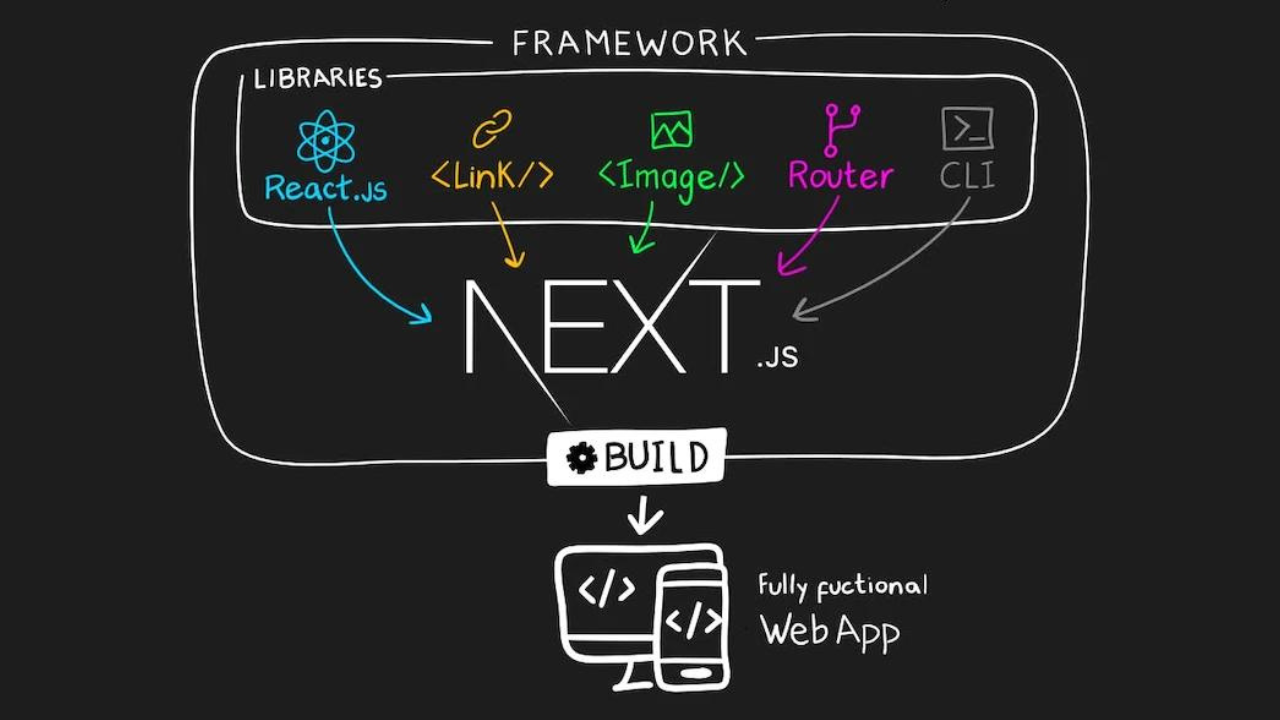
Top IT companies in Gujarat
October 24, 2024
October 7, 2024

In the ever-evolving landscape of web development, we're witnessing a significant shift back to server-side rendering (SSR), with Next.js leading the charge. This resurgence isn't just a fleeting trend; it's a response to the growing demands for faster, more efficient, and SEO-friendly web applications. As we delve into this topic, we'll explore why Next.js has become the go-to framework for SSR and how it's reshaping the way we build and deploy web applications.
To understand the current landscape, we need to take a brief journey through the history of web rendering:
This evolution reflects the industry's constant search for the perfect balance between performance, user experience, and developer productivity. The pendulum has swung back towards server-side rendering, but with a modern twist that addresses the limitations of its predecessors.
Server-side rendering is the process of generating HTML on the server in response to a user's request. This approach offers several advantages:
However, traditional SSR had its drawbacks, including slower subsequent page loads and less interactive user interfaces. This is where Next.js comes in, offering a solution that combines the best of both worlds.
Next.js, built on top of React, has emerged as the leading framework for server-side rendering in modern web development. It addresses the limitations of both traditional SSR and pure client-side rendering (CSR) approaches. Here's why Next.js has gained such widespread adoption:
Next.js automatically splits your code into smaller chunks, loading only what's necessary for each page. This results in faster load times and improved performance, especially on mobile devices.
Next.js offers flexibility in rendering methods, allowing developers to choose between:
This hybrid approach enables developers to optimize each page or component based on its specific requirements.
Next.js allows you to create API endpoints as part of your application, simplifying the process of building full-stack applications without the need for a separate backend server.
With built-in support for CSS Modules, Sass, and CSS-in-JS solutions, Next.js makes styling your application a breeze while maintaining good performance.
The framework includes an Image component that automatically optimizes images for different devices and viewport sizes, significantly improving load times and user experience.
To truly appreciate the impact of Next.js and server-side rendering, let's compare it to traditional client-side rendering approaches:
| Aspect | Next.js (SSR) | Traditional CSR |
|---|---|---|
| Initial Load Time | Faster, as the server sends pre-rendered HTML | Slower, requires downloading and parsing JavaScript before rendering |
| SEO | Excellent, content is immediately crawlable | Challenging, requires additional setup for proper indexing |
| Time to Interactive | Generally faster, especially on low-end devices | Can be slower due to JavaScript execution on the client |
| Subsequent Navigation | Fast, with client-side navigation for SPA-like experience | Fast, once the initial load is complete |
| Server Load | Higher, as rendering occurs on the server | Lower, as rendering is offloaded to the client |
| Development Experience | Streamlined, with built-in optimizations | Varies, often requires additional configuration |
The adoption of Next.js has been nothing short of remarkable. According to npm trends, downloads of Next.js have been consistently increasing, outpacing many other popular frameworks. This growth is driven by several factors:
This widespread adoption has created a positive feedback loop, with more developers learning Next.js, contributing to its ecosystem, and further improving the framework.
To illustrate the real-world benefits of Next.js and server-side rendering, let's look at a few case studies:
A major e-commerce platform switched from a client-side rendered React application to Next.js. The results were significant:
A popular news website migrated to Next.js, focusing on server-side rendering for their article pages. They observed:
A B2B SaaS company adopted Next.js for their customer dashboard. The development team reported:
While Next.js offers numerous advantages, it's important to consider potential challenges:
However, these challenges are often outweighed by the benefits, and the Next.js community continues to work on solutions and best practices to address these concerns.
As we look to the future, several trends suggest that Next.js and server-side rendering will continue to play a crucial role in web development:
Next.js is well-positioned to address these trends, with ongoing development and a commitment to staying at the forefront of web technologies.
At Nexowa, we specialize in leveraging the power of Next.js to create high-performance, scalable web applications. Our team of experienced developers can help you:
Our approach combines technical expertise with a deep understanding of business needs, ensuring that your Next.js application not only performs well technically but also drives your business objectives.
The rise of Next.js and the resurgence of server-side rendering mark a significant shift in web development practices. By addressing the limitations of both traditional SSR and pure client-side rendering, Next.js offers a powerful, flexible solution for building modern web applications.
As we've explored throughout this article, the benefits of adopting Next.js are clear: improved performance, enhanced SEO, better user experience, and increased developer productivity. While challenges exist, the growing adoption and robust community support suggest that Next.js will continue to play a pivotal role in shaping the future of web development.
Whether you're a seasoned developer looking to optimize your applications or a business owner seeking to improve your online presence, embracing Next.js and server-side rendering could be the key to staying ahead in the fast-paced world of web technology. And with partners like Nexowa ready to guide you through the process, there's never been a better time to make the switch.
The era of server-side rendering with Next.js is here, and it's revolutionizing the way we build for the web. Are you ready to be part of this exciting transformation?

Top IT companies in Gujarat
October 24, 2024

Hire a Dedicated App Developer: Build Your App Today
October 24, 2024
-1729776429043.avif?alt=media&token=2affca87-dade-4f14-94cb-2c2416a8238d)
What is Angular? Superior Web Development, Performance & Benefits
October 24, 2024

Building a Tech Stack for Growth: Tools and Technologies Driving Business Expansion
October 15, 2024
-1729777074986.avif?alt=media&token=c8b8bf65-87d3-47d8-b990-3ff1929ea86f)
Amazing Tech: Is AI-Powered App Development with FlutterFlow the Future?
October 15, 2024

What is CSS nesting?
October 15, 2024